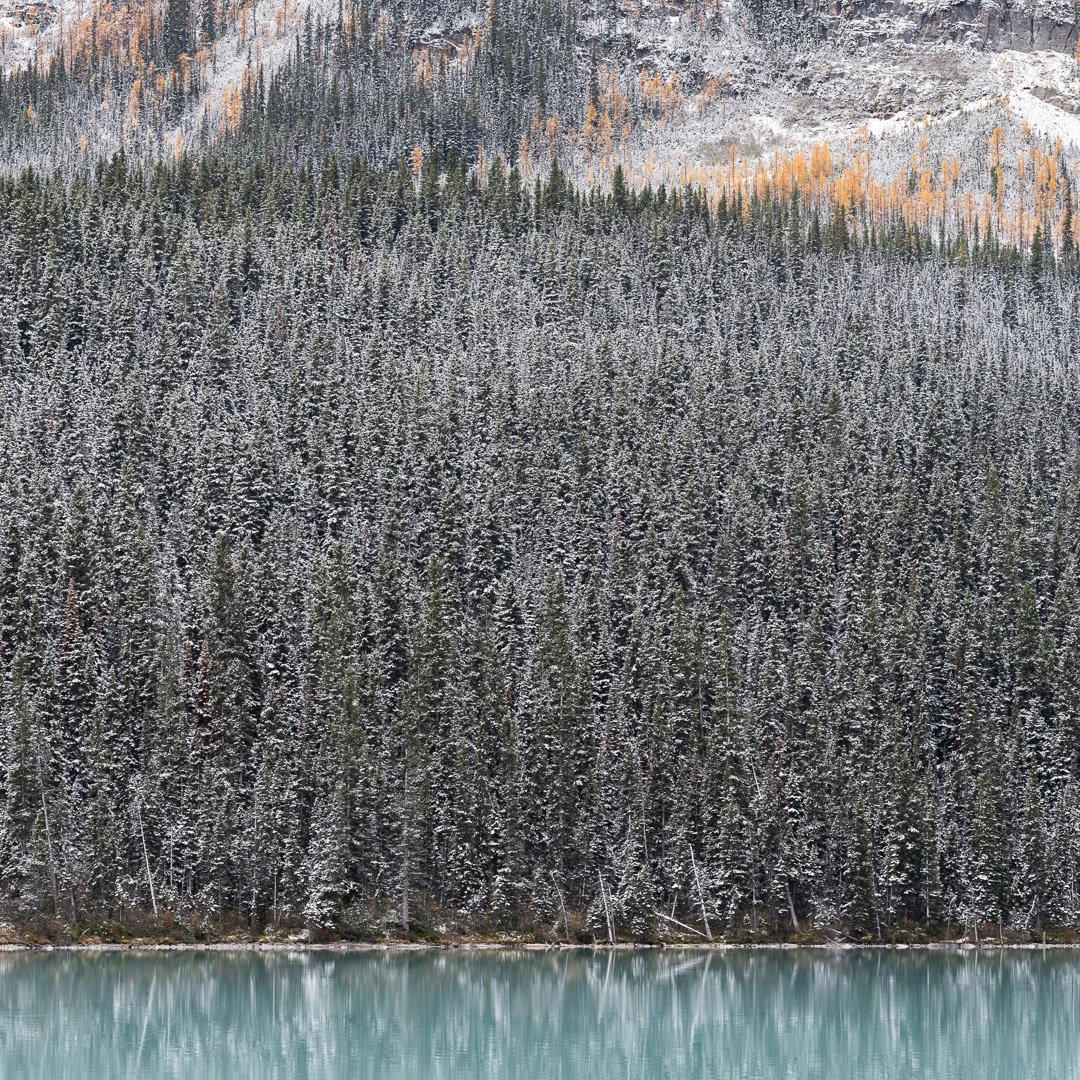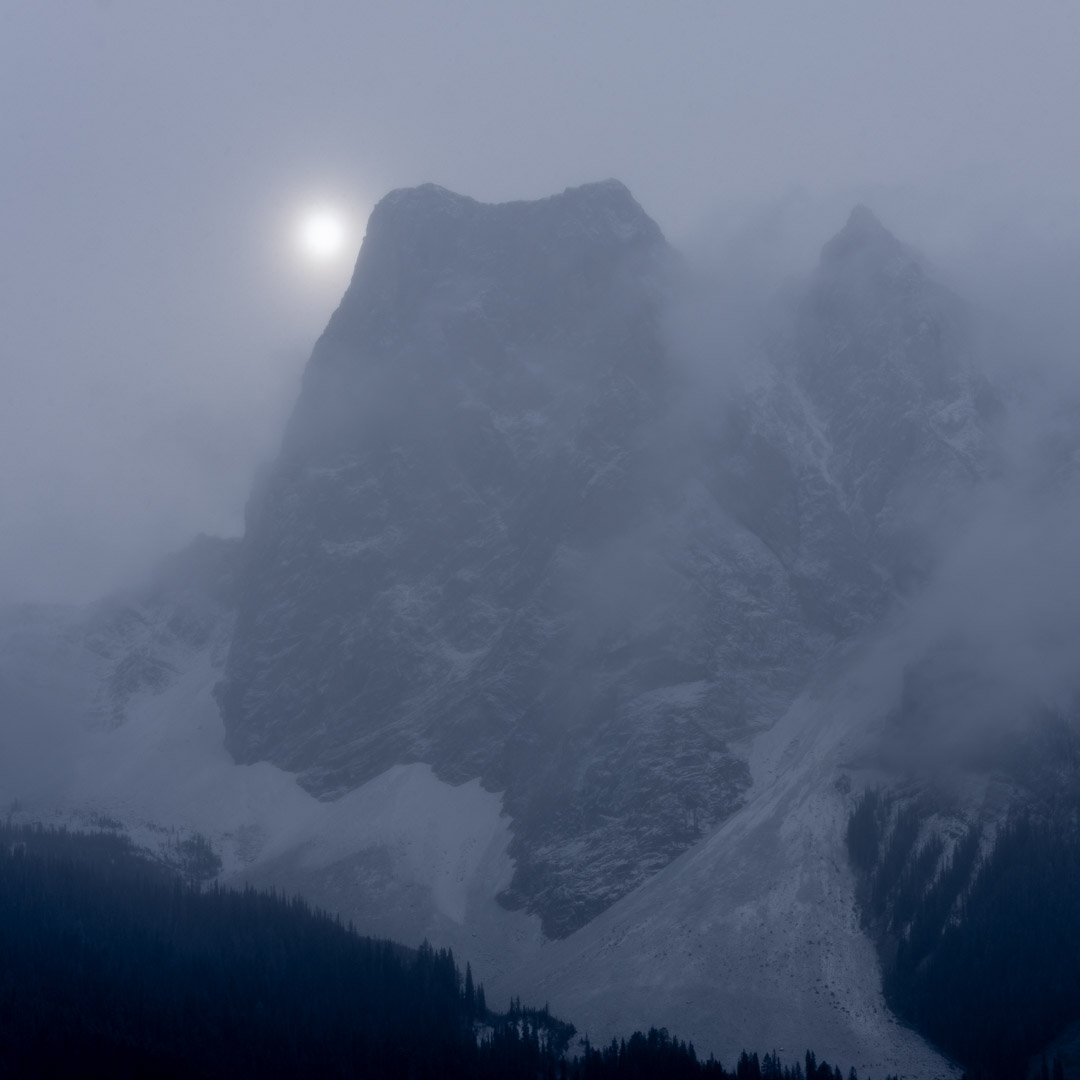First Northern Rockies Anthropocene Survey (2019)

Medicine Lake, Jasper National Park, Alberta, Canada, 2019
The warming planet resulted in the eradication of the moose population in Jasper and other Rocky Mountain parks, as moose succumbed to increased disease, ticks, and droughts. Warmer temperatures provided for dramatically increased tick populations, with some emaciated moose being found dead with tens of thousands of ticks. Drought also forced moose to congregate at fewer remaining water sources, allowing for proliferation for diseases such as brain worm.

Andromeda Glacier, Jasper National Park, Alberta, Canada, 2019
Visitors to the Columbia Icefield in 2019 could gaze at the glacier on Mount Andromeda while standing on the massive Columbia Icefield. A century later, visitors now unfortunately can no longer see the last remnants of the Andromeda Glacier, and the location of the former Columbia Icefield itself where visitors once stood on the surface of a glacier instead provides insight into the slow return of alpine meadows on land once covered in ice.

Sperry Glacier, Glacier National Park, Montana, 2019
Glacier National Park famously has no glaciers now, but in 2019, Sperry Glacier and 34 others still remained active. The decline of the namesake glaciers in the park from a peak of 150 active glaciers in 1850 to zero by 2100 symbolizes to many the impact of the warming planet.

Going to the Sun Road, Glacier National Park, Montana, 2019
Higher temperatures, drought, and reduced snowpack all contributed to the dramatic increase in wildfires in the American West during the last 120 years. The intensity of wildfires in Glacier has lessened now as all of the older and larger trees in the park have already burned, and scientists are now studying what flora and fauna will replace what existed before.

Emerald Lake, Yoho National Park, British Columbia, Canada
The magnificent turquoise, greens, and blues of alpine lakes in the twenty-first century were caused by sunlight reflecting off particles of glacial silt (also known as rock or glacial flour) suspended in the lake water, as the silt primarily reflected blue and green hues. Glacial silt was created by the grinding of rocks underneath glacial ice, which then flowed into a lake as part of annual melt. The silt stayed suspended in the lake for years, but as glaciers disappeared, downstream lakes such as Emerald Lake slowly lost their distinctive color without new replenishing glacial silt.

Lake Louise, Banff National Park, Alberta, Canada, 2019
Banff was once known for its spectacular mountain larch, a deciduous conifer that turned a vibrant yellow color in the autumn. The narrow range of viability of the mountain larch in 2019 continued to get higher in altitude as the Canadian Rockies warmed, eventually resulting in extinction of the larch in the park as its viable habitat disappeared.

Takakkaw Falls, Yoho National Park, British Columbia, Canada, 2019
Daly Glacier was part of the Waputik Icefield before it disappeared last century. The melting of Daly Glacier dried up the popular and spectacular 1,224 foot (373 meter) Takakkaw Falls.
"Takakkaw" translates to "wonderful" in Cree, the native language for indigenous peoples of this area.

Jackson Glacier, Glacier National Park, Montana, 2019
Jackson Glacier was one of the last twenty glaciers in the park to survive the warming planet, but melted quickly enough that it was no longer an active glacier by 2032.

Mount Burgess, Yoho National Park, British Columbia, Canada
With Canada’s average temperature rising almost twice the global average in the last century, snowpacks and glaciers in the Canadian Rockies have been substantially reduced, with approximately 78% of glacial volume disappearing in that time.